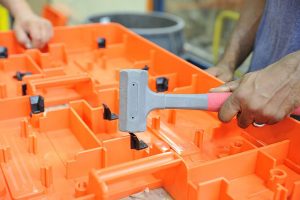Hand-working Height vs. Work Surface Height: What’s the Difference?
Posted on April 24, 2019 | in Ergonomics

We all know it’s important to design workstations based on anthropometric data. And we know that one of those key design guidelines relates to height. But height of what? The part? The working surface? The tools? Here are two different heights to consider in your design:
Hand-working height: Think of this as the height where the employee is working most of the time. For example, if the employee is using a screwdriver to secure a fastener to the top of a part, the hand working height would be the surface height, plus the part height, plus the length of the tool. Hand-working height is typically measured from the standing surface to first knuckle on the middle finger.
Surface height: As the name implies, this is the height of the surface where the part or equipment is placed. Surface height is measured from the standing surface to the top of the surface or workbench. It does not include the height of parts or tools.
When to use which? Most of the time, when you are considering ergonomics design guidelines, you want to use hand-working height. By considering the surface height and the additional height of the parts and tools on top of the surface, you can ensure that employees can perform tasks while maintaining a neutral—and safer—posture.